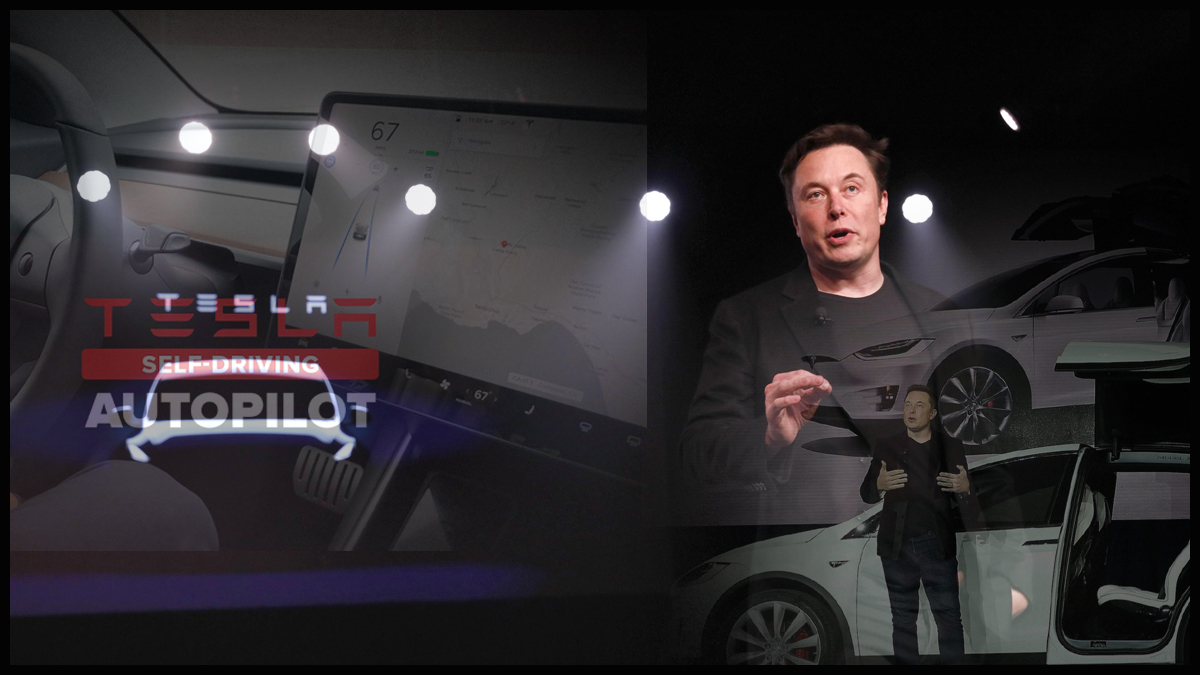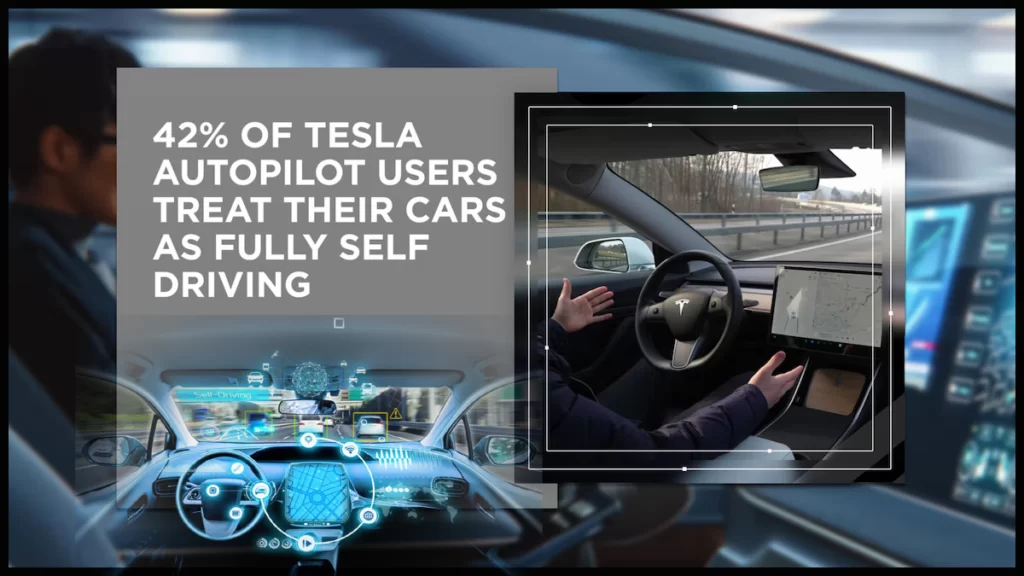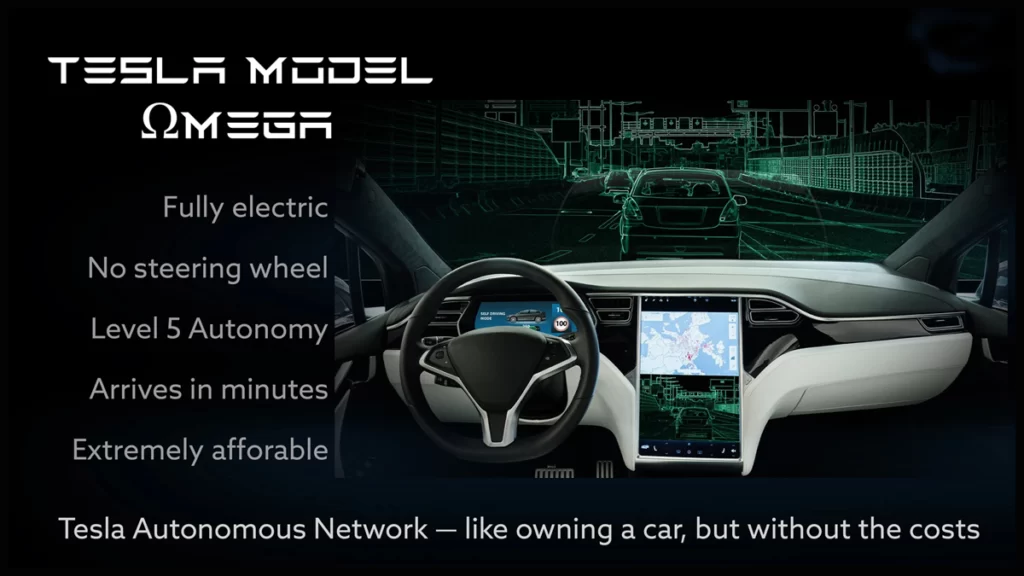
All about Tesla Self-driving cars are equipped with advanced Autopilot features that allow for semi-autonomous driving.
They use a combination of cameras, radar, ultrasonic sensors, and GPS to detect and respond to their environment. The current version of Autopilot allows for hands-free driving on highways, automatic lane changes, and self-parking.
However, it is important to note that Tesla still requires drivers to pay attention and be ready to take control at any time, as the technology is not yet advanced enough for full autonomy. Elon Musk, CEO of Tesla, has stated that the company is working towards fully autonomous driving capabilities in the future.
Here’s some additional information: All about Tesla Self-driving cars
Hardware: Tesla’s self-driving system is built into all new Tesla vehicles and includes hardware components such as cameras, radar, ultrasonic sensors, and GPS. These components work together to provide 360-degree coverage around the vehicle and allow it to detect and respond to its environment.
Autopilot: Tesla’s Autopilot system is a suite of advanced driver assistance features that allow the vehicle to drive itself under certain conditions. It is designed to assist the driver and make driving easier, but it does not make the vehicle fully autonomous.

Software Updates: Tesla is constantly updating its software to improve the performance and capabilities of its self-driving system. These updates are delivered over the air to all Tesla vehicles, so customers can benefit from the latest advancements without having to physically bring their vehicles in for upgrades.
Safety: Tesla’s self-driving system is designed with safety as a top priority. The company has implemented multiple redundancies and backup systems to ensure that the vehicle can continue to operate even if one or more components fail. However, it is still important for drivers to pay attention and be prepared to take control at any time.
Future Developments: Tesla is actively working on developing fully autonomous driving capabilities. Elon Musk has stated that the company’s goal is to eventually have vehicles that can safely drive themselves without any human intervention. However, it is not clear when this technology will be available to the public.
All about Tesla Self-driving cars
How does Tesla self-driving work?
Tesla’s self-driving system works through the integration of multiple sensors and computer vision technology. The system uses cameras, radar, ultrasonic sensors, and GPS to gather data about the vehicle’s surroundings and create a real-time map of the environment. This information is processed by the vehicle’s onboard computer to make driving decisions, such as accelerating, braking, and steering.

Here is a high-level overview of the steps involved in Tesla’s self-driving system:
Sensor data collection: The cameras, radar, ultrasonic sensors, and GPS work together to collect data about the vehicle’s surroundings. This information is used to detect and track other vehicles, pedestrians, road signs, traffic lights, and other relevant objects.
Environment mapping: The sensor data is processed to create a real-time map of the vehicle’s environment. This map is used to understand the location and movement of objects in the environment.
Driving decisions: Based on the sensor data and environment map, the onboard computer calculates the best driving decisions, such as accelerating, braking, and steering. The computer also continually evaluates the driving situation and adjusts its decisions as needed.
Control execution: The computer sends control signals to the vehicle’s actuators, such as the electric motor and steering system, to execute the driving decisions.
It is important to note that Tesla’s self-driving system is not yet fully autonomous and requires drivers to pay attention and be prepared to take control at any time. The company is actively working on developing fully autonomous driving capabilities. But it is not clear when this technology will be available to the public.
Can any T e s l a have full self-driving capability?
Currently, no Tesla vehicle has full self-driving capability. Tesla’s self-driving system is called Autopilot, and it is designed to assist the driver. But it does not make the vehicle fully autonomous. The current version of Autopilot allows for hands-free driving on highways. Also automatic lane changes, and self-parkin. But it still requires the driver to pay attention and be ready to take control at any time.
Tesla CEO Elon Musk has stated that the company’s goal is to eventually have vehicles that can safely drive themselves without any human intervention. But it is not clear when this technology will be available to the public. The development of fully autonomous vehicles is a complex and ongoing process that involves significant advancements in computer vision. And machine learning, and sensor technology.
Does Tesla autopilot work on all roads?
No, Tesla’s Autopilot system does not currently work on all roads. The system is designed to be used on well-marked highways and roads with clear lane markings. And it is not intended for use on dirt roads, poorly marked roads, or roads without lane markings.
In order to use Autopilot, the vehicle must be able to accurately detect and track the road and its surroundings using the cameras, radar, and ultrasonic sensors. On roads that do not meet these requirements, the system may not be able to operate safely and effectively.
It’s important to note that even on roads where Autopilot can be used. The driver must pay attention and be prepared to take control at any time. Tesla’s Autopilot system is designed to assist the driver, not replace them. And the driver is ultimately responsible for the safe operation of the vehicle.
Are Autopilot cars safe?
The safety of Tesla’s Autopilot system has been a topic of debate and discussion since its introduction. While Autopilot has been credited with reducing the number of accidents in some cases, it has also been involved in several high-profile accidents that have raised concerns about the system’s safety.
It is important to understand that Tesla’s Autopilot system is not a fully autonomous driving system and is not intended to replace the driver. The system is designed to assist the driver, not replace them, and the driver is ultimately responsible for the safe operation of the vehicle.
All about Tesla Self-driving cars
In order to use Autopilot, the driver must pay attention and be prepared to take control at any time. If the driver does not respond to the system’s prompts to take control, the vehicle will gradually slow down and come to a stop.
Overall, the safety of Autopilot will depend on a number of factors. Also including the quality and accuracy of the sensors and computer vision technology. And the driver’s ability to pay attention and respond to the system’s prompts, and the road and traffic conditions. Tesla continues to refine and improve the Autopilot system through regular software updates. And the company has stated that its goal is to eventually develop fully autonomous vehicles. And that can also safely operate without any human intervention.
Is T e s l a autopilot safer than human?
The question of whether Tesla’s Autopilot system is safer than a human driver is complex and difficult to answer definitively. There are arguments that can be made for both sides, and the answer will likely depend on a number of factors. Also including the specific conditions and circumstances of each individual case.
On one hand, Autopilot has several safety features, such as automatic emergency braking and lane departure warning. Also that can help reduce the risk of accidents. Additionally, the system can detect and respond to potential hazards faster than a human driver. And as it can process data from multiple sensors in real-time.
On the other hand, Autopilot is not a fully autonomous system and still requires the driver to pay attention and be ready to take control at any time. If the driver does not pay attention or does not respond to the system’s prompts to take control, this can lead to accidents.
Additionally, there have been some high-profile accidents involving Tesla vehicles using Autopilot that have raised concerns about the system’s safety. These incidents have led some to argue that the system is not yet ready for widespread use on public roads.
Also Read – Malnutrition: Types, Symptoms & Diagnosis
All about T e s l a Self-driving cars
It’s worth noting that Tesla continues to refine and improve the Autopilot system through regular software updates. And the company has stated that its goal is to eventually develop fully autonomous vehicles that can safely operate without any human intervention. However, it is not yet clear when this technology will be available to the public.
In conclusion, while Autopilot has the potential to improve road safety. Also it is not yet clear whether it is safer than a human driver in all cases. The driver must still pay attention and be prepared to take control at any time. And the system is not intended to replace human judgment and decision-making.
Also Read – All about World Cancer Day
Can you sleep in a Tesla while on Autopilot?
No, it is not safe to sleep in a Tesla while on Autopilot. Tesla’s Autopilot system is designed to assist the driver, not replace the. And the driver must always be prepared to take control of the vehicle at any time.
Even if the vehicle is equipped with Autopilot. The driver must still be alert and paying attention to the road and the vehicle’s surroundings. If the driver falls asleep or is otherwise unable to respond to the vehicle’s prompts to take control, this could lead to an accident.
Additionally, it is illegal and dangerous to sleep while operating a vehicle on public roads. Also regardless of whether the vehicle is equipped with autonomous driving technology. If you need to rest while driving, it is important to pull over and find a safe place to park the vehicle.
In conclusion, it is not safe to sleep in a Tesla while on Autopilot. And you should always be alert and paying attention while operating a vehicle on public roads.
All about Tesla Self-driving cars
Also Read – All about World Health Organization

One thought on “All about Tesla Self-driving cars”